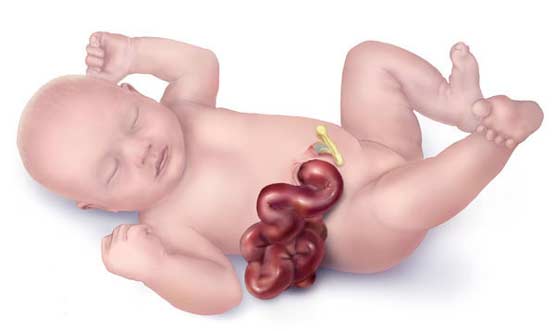
When Brooke gave birth, she wasn't able to hold her newborn daughter against her, or feel the baby's tiny chest rise and fall as it issued its first, tremendous wail.
She got only a brief glimpse of Anna before the baby was whisked away into surgery.
What she saw was disquieting: Anna's intestines protruded outside her body, dark and slick and alien-looking. It would take a nerve-wracking operation and weeks in the intensive care unit until her internal organs were back were they belonged and Anna could finally come home, Brooke wrote in a post, which does not give her last name, on the website for the Centers for Disease Control and Prevention.
Anna was born with gastroschisis, a rare birth defect that the CDC said has become worryingly more common in recent years, particularly for young African American mothers.
In a report published Friday, the public health agency said that it found 30 percent more cases of the disease between 2006 and 2012 than it did from 1995 to 2005. Among African American mothers who were younger than 20, the number of babies born with the disease jumped 263 percent.
"It concerns us that we don't know why more babies are being born with this serious birth defect. Public health research is urgently needed to figure out the cause and why certain women are at higher risk of having a baby born with gastroschisis," Coleen Boyle, the director of CDC's National Center on Birth Defects and Developmental Disabilities, said in a statement.
About 2,000 U.S. babies are born each year with gastroschisis, according to the CDC report.
Though doctors have been familiar with gastroschisis for years, no one knows what causes infants to be born with their intestines and other visceral organs - the stomach, the liver - protruding through a small hole near their belly button. It's more common to babies in younger mothers, according to the CDC, and low socio-economic status, low body mass index, poor nutrition, smoking and use of alcohol, illicit drugs and pain medicine are thought to be risk factors. Perhaps some harmful environmental factor inhibits the development of the abdominal wall during pregnancy. Or perhaps babies born with gastroschisis have some genetic defect that leaves them vulnerable.
CDC researchers will be looking into these indicators explain the sudden, significant increase in cases.
Still, the data in the report jibes with what doctors say they see routinely in their intensive care units.
"Anecdotally, over the years, most neonatologists would agree we've seen a steady persistent increase in the number of babies we see each year with gastroschisis," Dr. James Greenberg, co-director of the Perinatal Institute and director of Neonatology at Cincinnati Children's Hospital Medical Center, told CBS News.
Gastroschisis is usually reparable with surgery, particularly if doctors know the baby has the disease before it's born. But it can cause long-term health problems and sometimes life-threatening complications.
According to the Los Angeles Times, exposed organs are often irritated by the amniotic fluid that surrounds them. They may twist, swell, shorten or become infected or inflamed, making feeding and digestion difficult for newborns. Babies may also have trouble staying hydrated and taking in nutrients, since the small intestine is where most digestion and nutrient absorption takes place. That puts them at risk of stunted growth and malnutrition.
The surgery required to repair the opening -- or several surgeries, depending on how many organs are exposed -- means that babies spend many expensive and vulnerable weeks in the neonatal intensive care unit.
But most, including Anna, recover. The sick infant featured on the CDC website is now a healthy little girl, shown with her father, who holds a picture of from the moment she was born. There's barely any resemblance at all.


 Contact The Editor
Contact The Editor
 Articles By This Author
Articles By This Author
